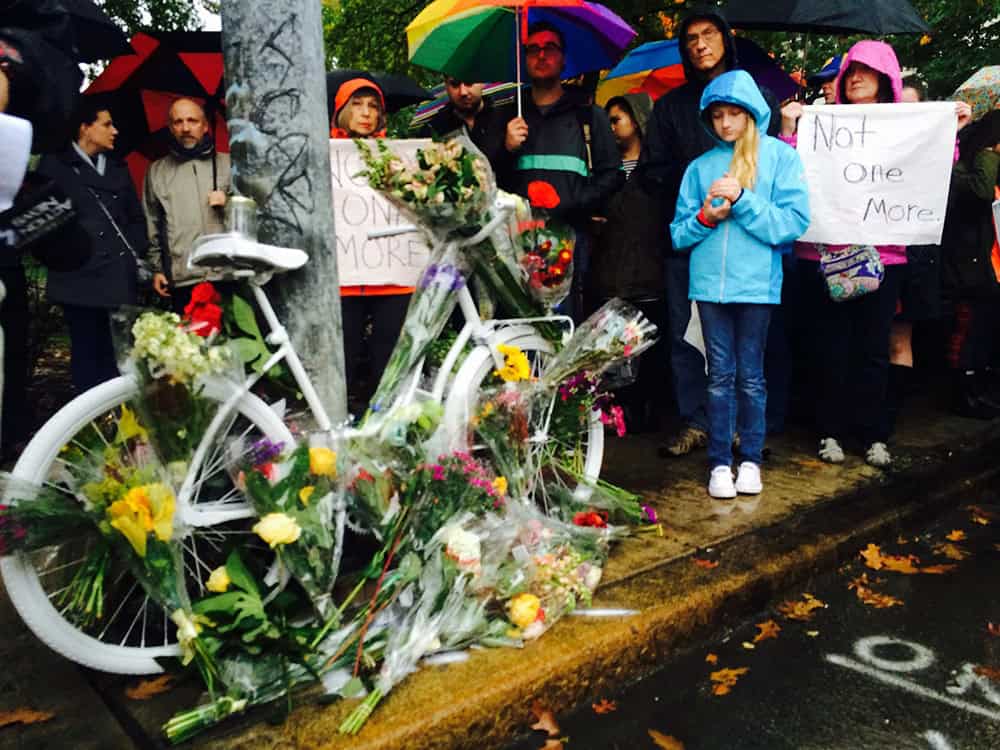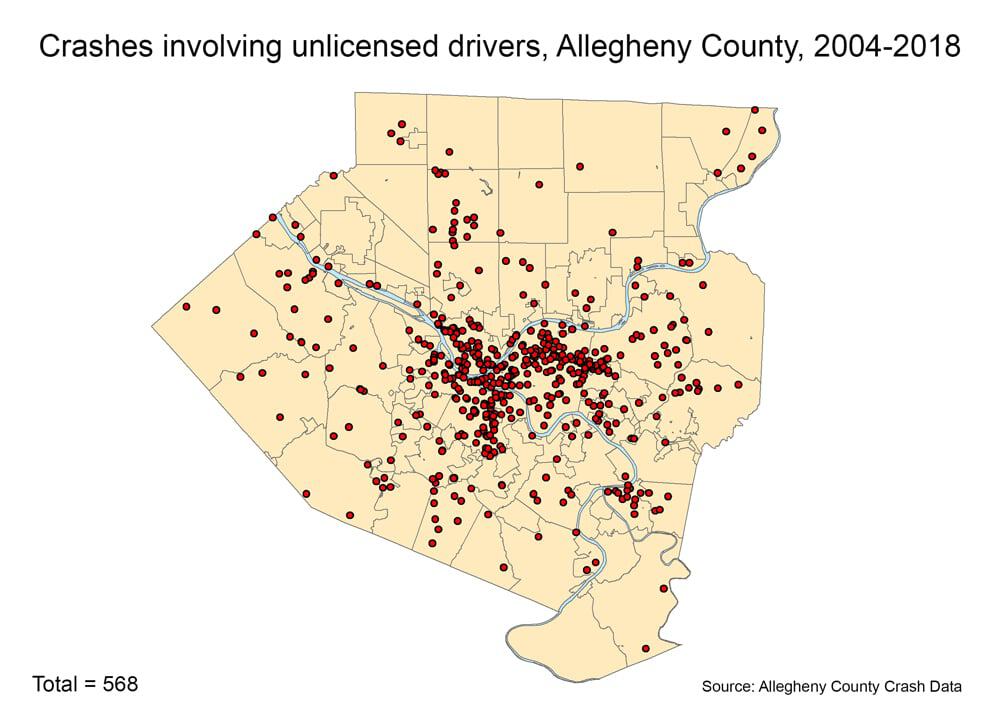
An unlicensed driver killed a bicyclist on Saturday. He was not the first.
Curt Brown, a 51-year old, local bicyclist was killed by Justin Michael Miller, an unlicensed 33-year old driving under the influence, at around noon on Big Sewickley Creek Rd, a popular route for area roadies. Miller was driving in the wrong lane, when he struck Brown and left the scene. He was quickly apprehended and is facing charges including homicide by vehicle while DUI, DUI, possession of drug paraphernalia, fleeing and eluding, and driving under suspension. He admitted to injecting heroin before driving his car.
Over the past fifteen years, there have been eighteen bicycle fatalities in Allegheny County, six of which, a full third, involved unlicensed drivers.
In October 2019, an unlicensed driver killed Austin Fike while he was riding to get dinner for his family in Brookline.
In October 2015, an unlicensed driver killed Susan Hicks while she was riding home from her job at the University of Pittsburgh in Oakland.
In September 2015, an unlicensed driver killed Brandon Ortmann on Steubenville Pike in Hampton Township. Brandon started riding a bicycle after he also lost his license, and was doing the right thing by not driving. Less than two months after the crash, the driver was pulled over again for driving on a suspended license.
In July of 2012, an unlicenced driver killed James Price on Penn Ave in Point Breeze.
And, a week later, also in July 2012, an unlicenced driver killed Anthony Green on Penn Ave in Wilkinsburg, mere blocks from James Price’s crash.
As Pittsburghers are reeling from the most recent fatality, it has many wondering: How can yet another unlicensed driver kill a bicyclist?
We took a look at the available Allegheny County crash data (the currently available data is 2004-2018) to see what is going on, and it was jarring.
In general, unlicensed drivers are most likely to be someone who had once had a license, and lost it due to any number of factors such as a DUI. For whatever reason, they continue to drive, either because they still have their own car, or a friend or family member lends them one.

As online commenters rage about the time they saw a bicyclist blow a stop sign, over the past 15 years, unlicensed drivers were involved in 568 reported crashes, resulting in 30 fatalities or major injuries. Of these, 66 were shown to be impaired. Impairment is highly undercounted, because it’s difficult to prove, as local police would need to perform a test before submitting the crash report, something that is not always done, or in the case of a hit-and-run, nearly impossible unless the suspect is apprehended before getting home. Year after year, these numbers remain steady.
Impaired driving that resulted in a fatality or major injury also saw a large spike in 2018, jumping from 73 cases in 2017 to 102 cases in 2018. On average, 86 people are killed or seriously injured every year by an impaired driver in Allegheny County.
This is unacceptable.
While there are no easy answers to this problem, we do know that making sure people can get around safely without their own car is key to ensuring that unlicensed drivers don’t get behind the wheel. Extra policing will not fix this, and may result in unintended harm to our Black and Brown neighbors, many of whom, such as immigrants, may have trouble getting a license in the first place.
This means frequent, funded, and safe transit, a safe and connected bike network and bike share system, quality sidewalks, ride hailing services and taxis, and land use policies that promote walkable and connected communities.
It also means that both the driver and whoever lent them their car need to be held accountable, and get the support they need to deal with transportation and addiction issues.
The current approach of waiting until an unlicensed driver gets caught, or is involved in a crash isn’t working. And the results are deadly.
1 Comment
Here’s an idea; Free, Frequent, Friendly, Pervasive Transit.
I advanced this during DOMI’s long-range planning exercise a few months ago.
There will be, of course, immediate objections about cost. Certainly, making mass transit free with no other changes or no broader accounting than the PAT budget would be daunting.
Consider, though, the overall cost and benefit of transit. If mass transit worked as well as it does in many places in Europe, there would be less driving.
— This would reduce the cost of new roads, road maintenance, personal vechicle repairs, and so on.
— It would increase equity by connecting more people who don’t now have cars with more jobs.
— It would reduce the carnage of motor vehicle crashes, especially by impaired drivers.
— It woud make it easier to enforce license serious penalties for driving without a license by removing the “but I had to drive to XXX” excuse.
— it would reduce the acreage used to store personal automobiles while they are not being driven.
So ti would surely affect the PAT budget, but the overall cost to the regison could be about the same, and the societal benefits would be substantial.